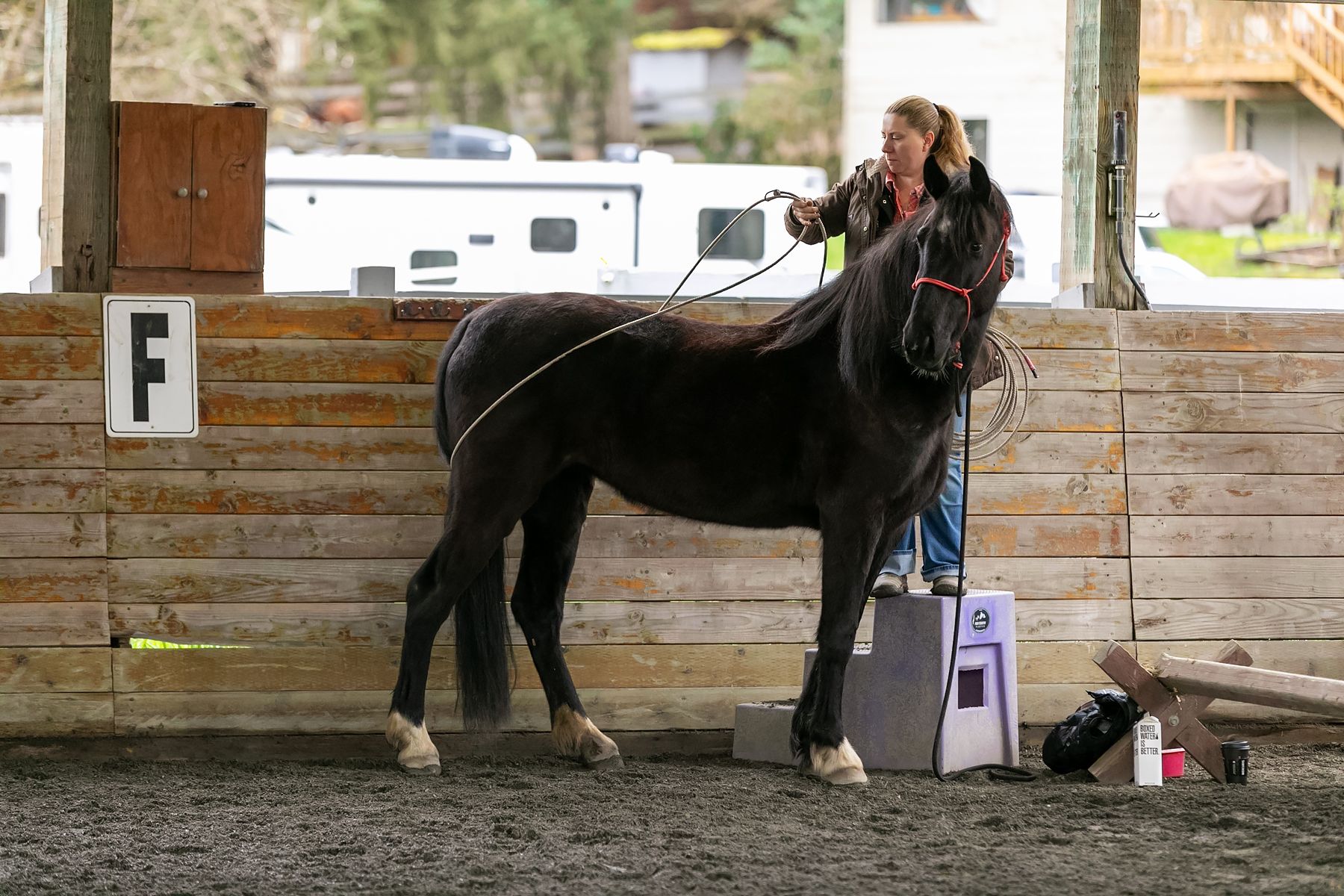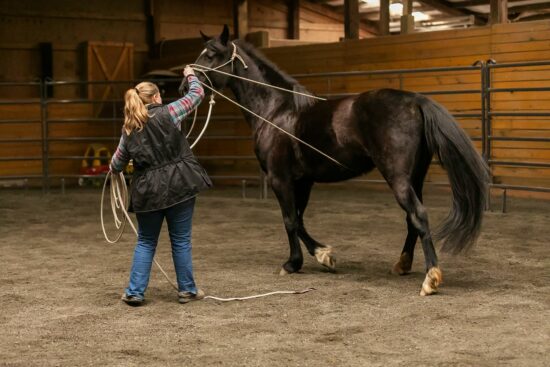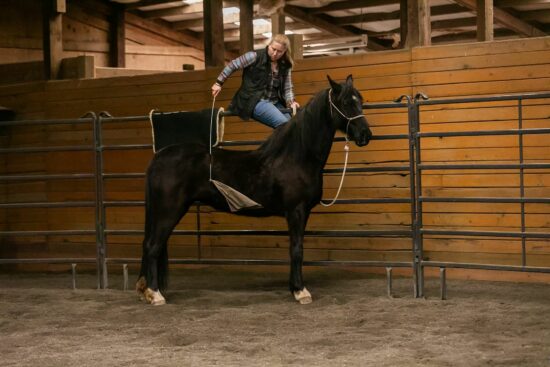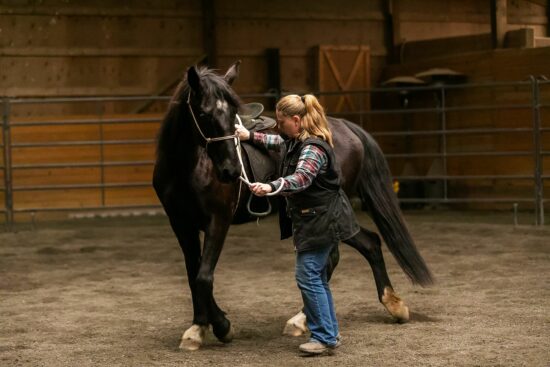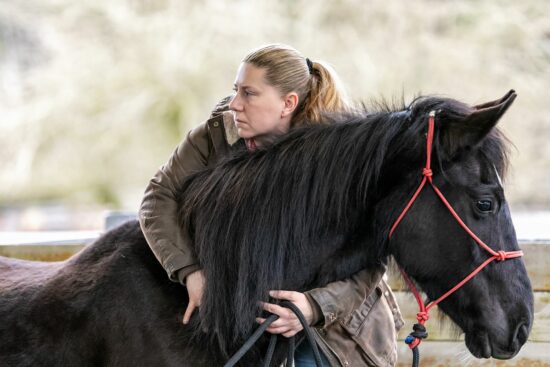“If Mahina’s personality is any indication of what the Saddlebred breed has to offer—call me a fan. She’s continued to grow into a soft, gentle, and kind soul. Her drive to connect with people and fellow horses is something truly unique and special. Being around her feels like spending time with a best friend—not just one who gets along with you, but one who genuinely enjoys every moment you share. If she truly were the last unicorn, we’d consider ourselves incredibly privileged to know her.
What’s the saying—time waits for no one? In Mahina’s case, maybe “fools rush in” is more fitting. Others might’ve chosen to saddle this mare already, but we’ve chosen not to. Could we get a saddle on her and call it done? Sure. But the real question is: at what cost?
Spending more time helping her feel secure and educated about what to do when her anxiety is triggered—by energy, environment, or unpredictability—will only set her up for success later. If we saddled her today, she probably wouldn’t buck. But she might bolt, trying to escape the strange new feelings of stirrups, cinches, and saddle strings strapped to her. More likely, she’d run straight to the nearest person in the arena, hoping they could save her. That kind of trouble may not seem dramatic, but it’s still trouble—and we’d rather help her overcome those fear and flight instincts first.
Our goal is to make the experience so uneventful, so safe and relaxed, that a 4‑H kid could cinch her up for the first time. That’s how we avoid adding fear and braces to this sensitive mare. So how do we do that? We start by continuing to confirm soft, unified, balanced circles at all gaits. We double down on our rope work—getting her 120% comfortable changing eyes, having the rope tossed up and over her head to the off-side, and carrying it around without concern at the walk. From there, we ask her to give to the feel of the rope along her body, building her trust and willingness to stay calm when things start to change.
We’ll also continue throwing the saddle up on her, letting the cinches dangle and the stirrups swing, getting her used to the movement and noise while working her in circling exercises. We’ll ask for transitions to be soft and rhythmic, maintaining a balanced walk, and encourage her to stop from feel and settle by petting to a stop both directions. These steps will help tremendously when it comes time to cinch her up and talk her out of trouble on the first rides.
We’ll also confirm that she doesn’t run in from the rail when transitioning down—a potentially dangerous reaction if she were to seek comfort from the pressure of a saddle by running toward someone. Practicing lots of up and down transitions out on the rail, and coming to straight, balanced stops on the rail, will help her learn to stay out there and feel confident.
Mahina is a joy to work with. Her body and presence shift dramatically depending on her balance. When she’s unified and engaging her hindquarters, she becomes soft, her head drops, and she moves in a beautiful, scoped-out frame. If we’re successful in starting her right, she’s going to be a light, forward, and thoughtful partner. Hopefully, all this effort will help her feel confident and comforted as new experiences come her way.”

